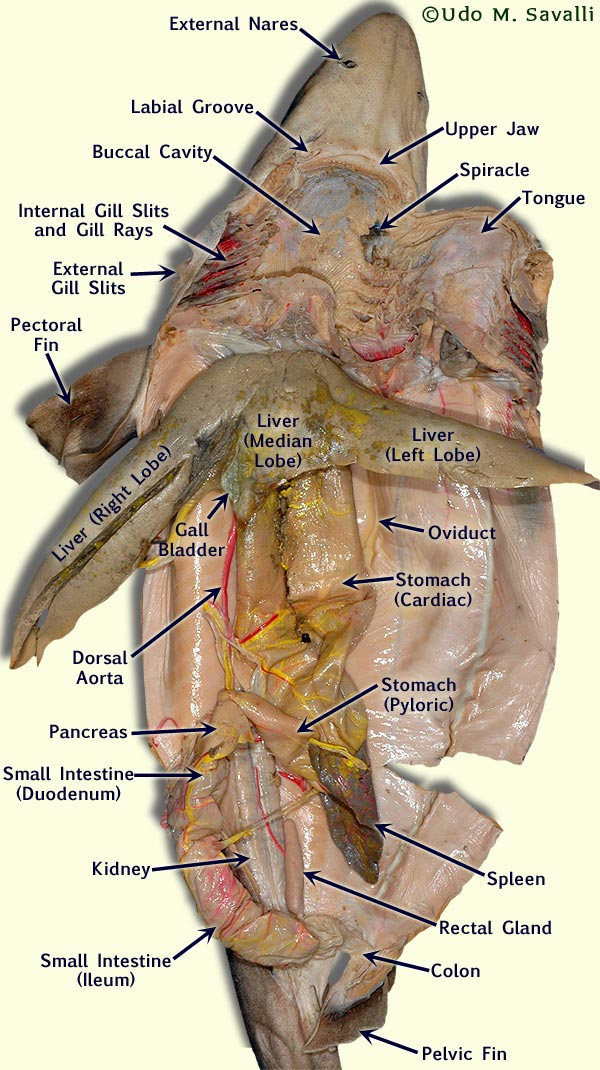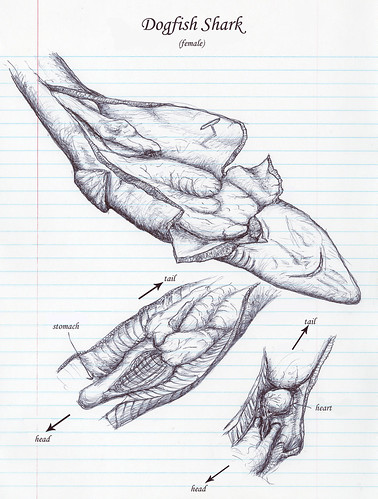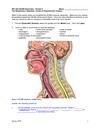Sharks (superorder Selachimorpha) are a type of fish with a full cartilaginous skeleton and a highly streamlined body. The earliest known sharks date from more than 420 million years ago.
Well-known species such as the great white shark, tiger shark, blue shark, mako shark, and the hammerhead are apex predators, at the top of the underwater food chain. Their extraordinary skills as predators fascinate and frighten humans, even as their survival is under serious threat from fishing and other human activities.
Until the 16th century, sharks were known to mariners as "sea dogs". The etymology of the word "shark" is uncertain. One theory is that it derives from the Yucatec Maya word xok, pronounced 'shok'. Evidence for this etymology comes from the OED, which notes the name "shark" first came into use after Sir John Hawkins' sailors exhibited one in London in 1569 and used the word "sharke" to refer to the large sharks of the Caribbean Sea.
An alternate etymology states that the original sense of the word was that of "predator, one who preys on others" from the German Schorck, a variant of Schurke "villain, scoundrel" (cf. card shark, loan shark, etc.), which was later applied to the fish due to its predatory behaviour.
Shark teeth are embedded in the gums rather than directly affixed to the jaw, and are constantly replaced throughout life. Multiple rows of replacement teeth grow in a groove on the inside of the jaw and steadily move forward as in a "conveyor belt"; some sharks lose 30,000 or more teeth in their lifetime. The rate of tooth replacement varies from once every 8–10 days to several months. In most species teeth are replaced one at a time, except in cookiecutter sharks the entire row of teeth is replaced simultaneously.
Tooth shape depends on diet: sharks that feed on mollusks and crustaceans have dense flattened teeth for crushing, those that feed on fish have needle-like teeth for gripping, and those that feed on larger prey such as mammals have pointed lower teeth for gripping and triangular upper teeth with serrated edges for cutting. The teeth of plankton-feeders such as the basking shark are smaller and non-functional.
Shark skeletons are very different from those of bony fish and terrestrial vertebrates. Sharks and other cartilaginous fish (skates and rays) have skeletons made of cartilage and connective tissue. Cartilage is flexible and durable, yet has about half the density of bone. This reduces the skeleton's weight, saving energy. Sharks have no rib cage and therefore on land a shark's own weight can crush it. Like its relatives, rays and skates, the shark's jaw is not attached to the cranium. The jaw's surface, like the shark's vertebrae and gill arches, needs extra support due to its heavy exposure to physical stress and its need for strength. It has a layer of tiny hexagonal plates called "tesserae", which are crystal blocks of calcium salts arranged as a mosaic. This gives these areas much of the same strength found in the bony tissue found in other animals. Generally sharks have only one layer of tesserae, but the jaws of large specimens, such as the bull shark, tiger shark, and the great white shark, have two to three layers or more, depending on body size. The jaws of a large great white shark may have up to five layers. In the rostrum (snout), the cartilage can be spongy and flexible to absorb the power of impacts.
Well-known species such as the great white shark, tiger shark, blue shark, mako shark, and the hammerhead are apex predators, at the top of the underwater food chain. Their extraordinary skills as predators fascinate and frighten humans, even as their survival is under serious threat from fishing and other human activities.
Until the 16th century, sharks were known to mariners as "sea dogs". The etymology of the word "shark" is uncertain. One theory is that it derives from the Yucatec Maya word xok, pronounced 'shok'. Evidence for this etymology comes from the OED, which notes the name "shark" first came into use after Sir John Hawkins' sailors exhibited one in London in 1569 and used the word "sharke" to refer to the large sharks of the Caribbean Sea.
 Labeled dissection of a shark |  Shark Anatomy - Click | The spiny dogfish shark is a |  Dogfish Shark Circulatory by |  dissection |
 Dogfish Shark Dissection. |  Sharks\x26#39; |  Dogfish Shark drawings |  Sharks are cartilliginous fish |  An inside look at sharks. |
Tooth shape depends on diet: sharks that feed on mollusks and crustaceans have dense flattened teeth for crushing, those that feed on fish have needle-like teeth for gripping, and those that feed on larger prey such as mammals have pointed lower teeth for gripping and triangular upper teeth with serrated edges for cutting. The teeth of plankton-feeders such as the basking shark are smaller and non-functional.
 Shark, Dissection and Anatomy |  See a video of Virtual Dogfish |  Internal anatomy of a shark: |  http://www.shark-info.com/ |  The Secret Anatomy of the |
 external anatomy of a dog |  ANATOMY OF THE DOGFISH SHARK |  Shark Dissection Project |  and Dogfish Shark) |  Glenn |
No comments:
Post a Comment